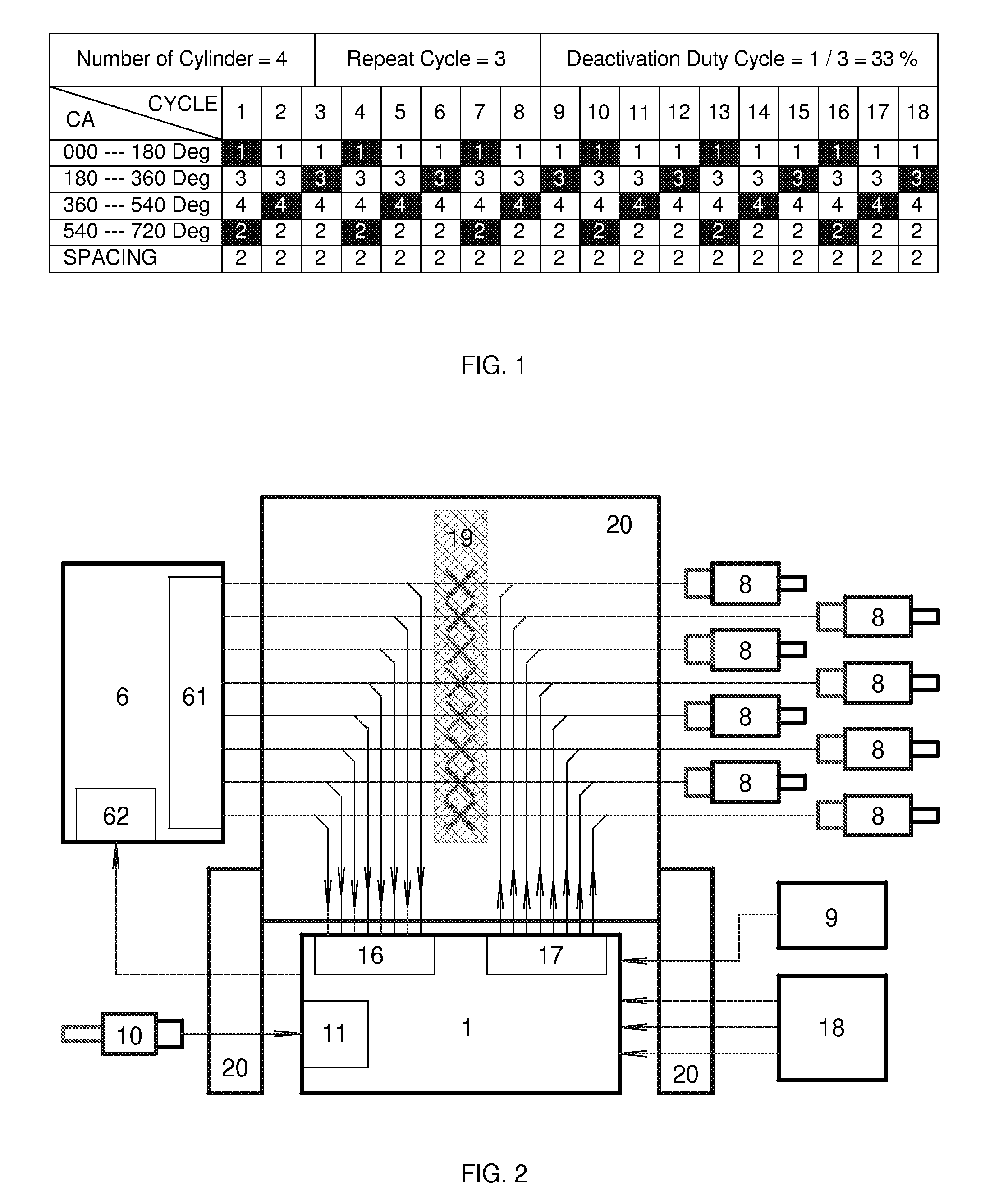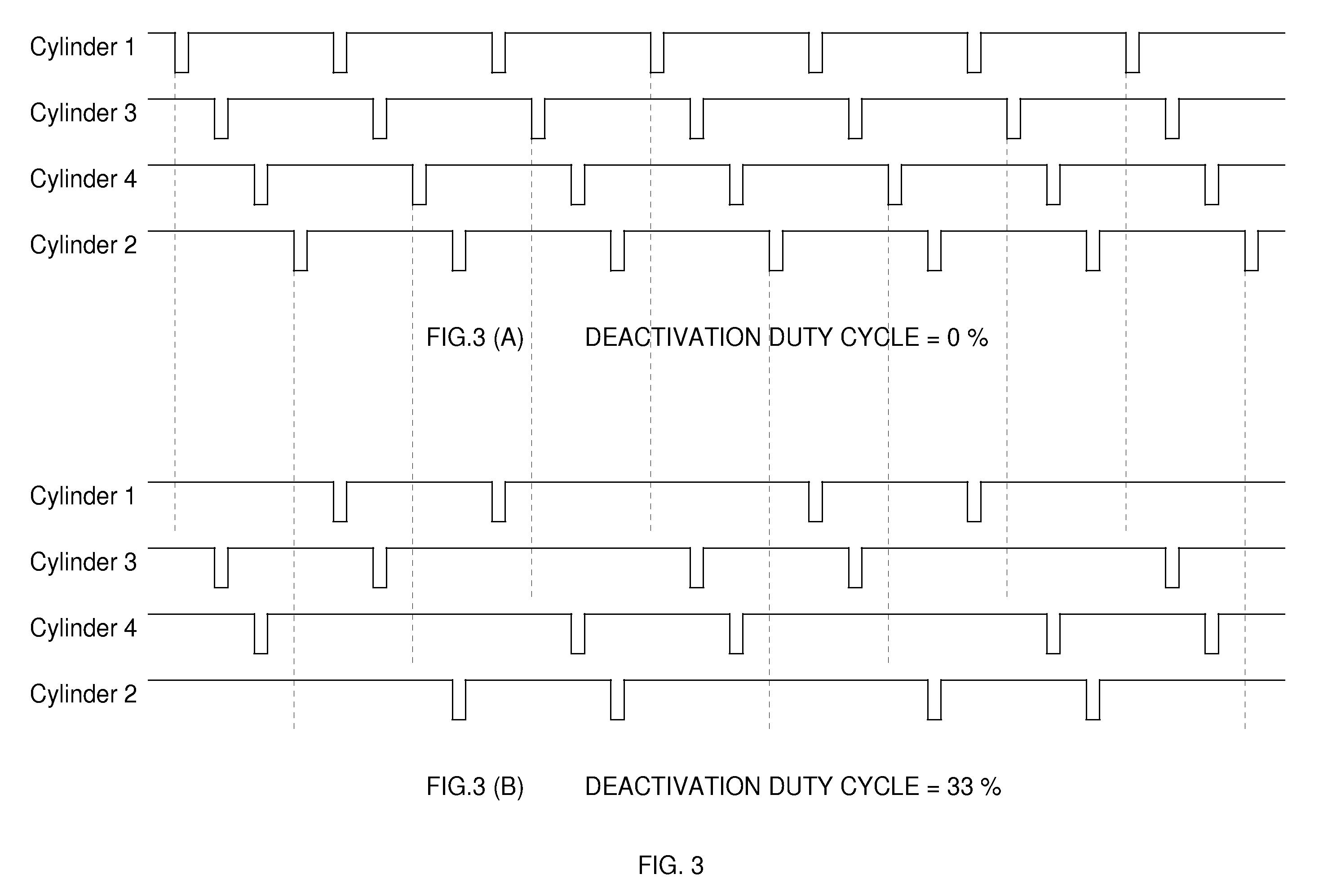Dynamic Cylinder Deactivation with Residual Heat Recovery
a technology of residual heat recovery and cylinder deactivation, which is applied in the direction of electric control, fuel injection control, machines/engines, etc., can solve the problems of dcd not disassembly and sealing of the valves, and achieve the effect of higher engine fuel conversion efficiency
- Summary
- Abstract
- Description
- Claims
- Application Information
AI Technical Summary
Benefits of technology
Problems solved by technology
Method used
Image
Examples
Embodiment Construction
[0032]Reference will now be made in detail to the presently preferred embodiments of the invention, examples of which are illustrated in the accompanying drawings.
[0033]The present invention is directed to Dynamic Cylinder Deactivation control method for internal combustion engine, or DCD for short. DCD is an electronic based cylinder deactivation method. Controlled by electronic circuits and microcontroller chips, DCD deactivates all the cylinders inside the engine dynamically and in a balanced way. That is, all the cylinders inside the engine would be working in an intermittent mode, being activated and deactivated alternatively. The result would be not only a well balanced engine thermal condition under which engine performance could be kept best, but also the residual heat recovery by engine thermodynamic expansion during the deactivation cycles. Based on all of these benefits, we could expect DCD would bring us higher engine fuel conversion efficiency than traditional sealed-va...
PUM
 Login to View More
Login to View More Abstract
Description
Claims
Application Information
 Login to View More
Login to View More - R&D
- Intellectual Property
- Life Sciences
- Materials
- Tech Scout
- Unparalleled Data Quality
- Higher Quality Content
- 60% Fewer Hallucinations
Browse by: Latest US Patents, China's latest patents, Technical Efficacy Thesaurus, Application Domain, Technology Topic, Popular Technical Reports.
© 2025 PatSnap. All rights reserved.Legal|Privacy policy|Modern Slavery Act Transparency Statement|Sitemap|About US| Contact US: help@patsnap.com



